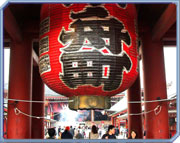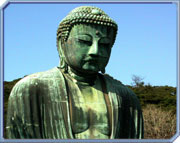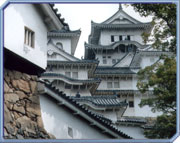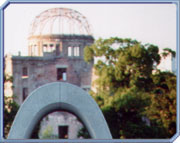 |
 |
 |
Japanese History and Culture - some of our recommendations
Japan has had a tumultuous history that has long fascinated visitors from the West. As an island country, much of the culture and arts grew up in isolation as Japan grew and was shaped by internal rather than international events. The most evident and well-know events took place under the Shogunates. Wars were waged, castles built and many Japanese art and cultural forms were created and developed into those we see today.
Even in Tokyo, the most modern of cities, traces of old-Edo can still be found especially in the old entertainment quarters of Asakusa and Ueno. The city of Tokyo was founded on two levels and both of these quarters were found in Shita-machi, literally ‘downtown’. These areas housed the poor, traders, servants and the pleasure quarters and the old history can still be seen in the lay out of the narrow twisting streets and alleys. The atmospheric Senso-ji temple also remains and the giant red lantern at the gates remains as one of the most recognisable symbols of the city.





Close to Tokyo is the sea-side town of Kamakura which was the capital of Japan from 1192 to 1333. The then Shogun, Yoritomo, ordered the building of a whole host of extravagant temples and shrines most of them Zen-influenced. The most dramatic of the sights in the Daibutsu (Big Buddha) who towers 40ft (11 metres) above and has survived flood, tidal wave and earthquake since being erected in 1252.
Further north are the interesting sights of Hiraizumi and the Tono Valley. Hiraizumi was the capital of the Fujiwara clan around the same time as Yoritomo was consolidating his seat of power in Kamakura. Not to be outdone by their southern rivals, the Fujiwara clan founded a number of temples in the town including the impressive Kojiki-do, a tiny, gold altar depicting an image of the Amida Nyorai.
Close to Hiraizumi and an interesting day-trip is the Tono Valley. This is one of the poorest areas in Japan in terms of monetary wealth but one of the richest in folk-tales known as Tono-monogatari. These legends were “discovered” in 1901 and are populated by a range of shadowy characters, spirits and demons who were believed to be the perpetrators of evil doings and malevolence.





For many people, the most fascinating remnants of Japanese history are the castles and very few are left in their original state. Himeji is the most famous of the castle sights in Japan and was used in the James Bond film, You Only Live Twice. The ingenious, maze-like gates and spiralling bailey, were designed to confuse enemy soldiers and these principles formed the basis of castle building throughout Japan. Though much smaller, the castles at Matsumoto close to the Japan Alps and Matsuyama in Shikoku are original castles that have retained their charm and old-style ambience.
For modern history, the most obvious cities to visit are Hiroshima and Nagasaki where the atomic bombs that ended WW2 in the pacific were dropped. Nagasaki also has an interesting story to tell about the Japan’s early days as a trading port and has examples of colonial architecture including the houses of Dutch traders, Chinese style temples and catholic churches.
BACK TO TOP
|
|
